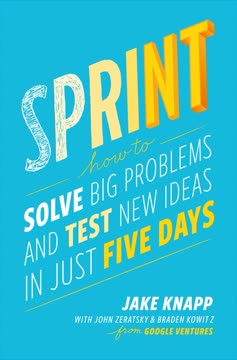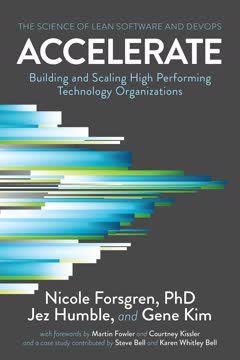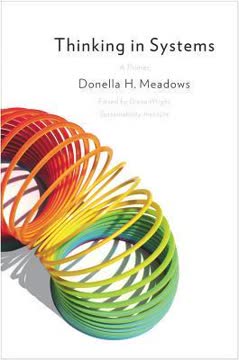Key Takeaways
1. Agile is a tool, not a strategy: Use it wisely and selectively
Doing agile right means using agile as a tool in service of a strategy to improve business performance.
Agile is not a panacea. It's a powerful approach for developing innovative solutions when requirements and delivery methods are uncertain. However, it's not suitable for every situation. Agile works best in contexts where:
- Customer needs are rapidly evolving
- Technology is changing quickly
- There's high uncertainty about the best solution
- Frequent feedback and iteration are valuable
Selective application is key. Organizations should:
- Identify areas where agile can add the most value
- Start with pilot projects to learn and refine the approach
- Gradually scale agile practices where they prove effective
- Maintain traditional methods where they remain appropriate
Remember that agile is meant to complement, not completely replace, existing processes. The goal is to create a balanced system that combines the stability of traditional approaches with the flexibility of agile methods.
2. Agile teams are the foundation: Empower them to innovate
Agile teams are tools used to develop innovative solutions when what to deliver, how to deliver it, or both are vague and unpredictable.
Autonomous, cross-functional teams. Effective agile teams typically have:
- 5-9 members with diverse skills
- Clear ownership of their work and outcomes
- Authority to make decisions about how to achieve goals
- Direct access to customers and stakeholders
Key practices for agile teams:
- Break work into short sprints (usually 1-4 weeks)
- Hold daily stand-up meetings for coordination
- Regularly demo progress to stakeholders
- Conduct retrospectives to continuously improve
Leaders should provide teams with clear objectives and constraints, then step back and allow them to self-organize and innovate. This empowerment fosters creativity, ownership, and rapid learning cycles.
3. Balance bureaucracy and innovation for an agile enterprise
An agile enterprise creates balanced systems that efficiently adapt to changing customer opportunities in order to deliver superior results.
Harmonize stability and flexibility. Agile enterprises don't eliminate bureaucracy entirely. Instead, they:
- Maintain standardized processes for routine operations
- Use agile methods for innovation and adaptation
- Create mechanisms for the two approaches to work together
Key elements of an agile enterprise:
- Clear, customer-focused purpose and strategy
- Adaptive planning and resource allocation
- Empowered, cross-functional teams
- Rapid experimentation and learning cycles
- Technology that enables quick changes
The goal is to create an organization that can reliably execute core business while rapidly innovating to meet new challenges and opportunities. This balance allows companies to be both efficient and adaptable in dynamic markets.
4. Leadership transformation is crucial for agile success
Leaders who aren't committed to learning and practicing agile methods shouldn't launch an agile transformation.
Shift from command-and-control to enablement. Agile leaders must:
- Trust teams to make decisions
- Provide guidance on "what" but not "how"
- Remove obstacles for teams
- Focus on long-term capability building
Key leadership behaviors:
- Communicate a clear vision and priorities
- Ask probing questions instead of giving orders
- Encourage experimentation and learning from failure
- Model agile practices in their own work
Leaders should form their own agile team at the executive level, focusing on strategy and enterprise-wide agility. This transformation often requires significant personal growth and change for leaders accustomed to traditional management approaches.
5. Adaptive planning, budgeting, and reviewing drive agility
Planning, budgeting, and reviewing work together in iterative feedback loops to create an agile plan-do-study-adjust system, just as any individual agile team would.
Shift from annual cycles to continuous adaptation. Agile enterprises:
- Create high-level plans with the flexibility to adjust
- Allocate resources more frequently (e.g., quarterly)
- Use rolling forecasts instead of fixed budgets
- Conduct regular reviews to reallocate based on results
Key practices:
- Maintain a prioritized backlog of strategic initiatives
- Fund persistent teams rather than individual projects
- Use objective metrics to evaluate progress
- Empower teams to make decisions within guardrails
This approach allows organizations to respond quickly to new information and changing market conditions, rather than being locked into outdated plans and budgets.
6. Rethink organizational structure and talent management
An organization's operating model should not be confused with its formal structure—it includes accountabilities and decision rights, a management system, leadership behaviors, culture, collaboration methodologies, and so on, in addition to structure.
Focus on the entire operating model. When transitioning to agile, consider:
- How to organize around customer value streams
- Where to deploy agile teams for maximum impact
- How to balance functional expertise and cross-functional collaboration
- What decision rights to push down to teams
Evolve talent practices:
- Hire for agile mindsets and adaptability
- Create career paths that don't rely on traditional hierarchy
- Shift performance management to focus on team outcomes
- Develop new skills like facilitation and coaching
Remember that structure alone doesn't determine how an organization operates. Culture, processes, and leadership behaviors are equally important in creating an agile enterprise.
7. Evolve processes and technology to support agile methods
Agile enterprises use business processes as enablers to deliver great customer solutions. Business processes are simple and are constantly improving.
Simplify and automate. To support agility:
- Break down complex processes into modular components
- Implement flexible, service-oriented IT architectures
- Automate routine tasks to free up human creativity
- Continuously refine processes based on feedback
Key technology enablers:
- Cloud computing for scalability
- Microservices for modular software development
- DevOps practices for rapid deployment
- Data analytics for quick decision-making
The goal is to create processes and systems that can be easily reconfigured as needs change, rather than becoming constraints on innovation and adaptation.
8. Make agile fun and rewarding to sustain momentum
If you and your team are not having fun with agile, you're not doing it right.
Foster a positive agile culture. To maintain enthusiasm:
- Celebrate small wins and learning experiences
- Encourage experimentation and tolerate failure
- Provide opportunities for skill development
- Recognize and reward agile behaviors
Key practices:
- Use gamification to make agile rituals engaging
- Share success stories across the organization
- Create opportunities for cross-team collaboration
- Invest in comfortable, collaborative workspaces
Remember that agile is about empowering people to do their best work. When done right, it should increase job satisfaction and engagement. If the transition feels overly stressful or burdensome, it's a sign that adjustments are needed in the approach.
Last updated:
FAQ
What's Doing Agile Right about?
- Agile Transformation Focus: The book explores how organizations can implement agile methodologies effectively, balancing them with traditional structures to avoid chaos.
- Good vs. Bad Agile: It distinguishes between successful agile practices and common pitfalls, providing insights to achieve sustainable success.
- Practical Roadmap: Offers guidance for leaders and teams, supported by real-world examples and empirical evidence across various industries.
Why should I read Doing Agile Right?
- Expert Insights: Authored by experienced consultants, the book is backed by extensive research and case studies.
- Applicable to All Levels: Provides valuable guidance for both senior executives and team members on adopting agile practices.
- Avoid Common Mistakes: Helps readers recognize and avoid pitfalls in agile transformations for smoother transitions and better outcomes.
What are the key takeaways of Doing Agile Right?
- Agile Requires Commitment: Agile is not a quick fix; it requires time, experimentation, and commitment to achieve results.
- Balance is Key: Successful organizations balance agile practices with necessary bureaucratic structures for innovation and efficiency.
- Leadership's Crucial Role: Active involvement and support from leadership are essential for successful agile transformations.
What are the best quotes from Doing Agile Right and what do they mean?
- "If you and your team are not having fun with agile, you’re not doing it right.": Highlights the importance of engagement and enjoyment in the agile process.
- "Agile isn’t a goal in itself; it’s a means to an end.": Emphasizes focusing on business outcomes rather than just implementing agile for its own sake.
- "The challenge is not to replace bureaucracy with agile everywhere but to find the right balance between the two.": Suggests a balanced approach to agile transformation.
How does Doing Agile Right define agile leadership?
- Empowering Teams: Agile leaders empower teams to make decisions and take ownership of their work.
- Continuous Learning: They foster a culture of continuous learning, encouraging experimentation and adaptation.
- Collaboration and Trust: Building trust and collaboration among team members is essential for agile leadership.
What are the common pitfalls of agile transformations mentioned in Doing Agile Right?
- Misunderstanding Agile Principles: Adopting agile terminology without understanding its core principles leads to ineffective implementations.
- Overemphasis on Structure: Changing organizational structure without addressing cultural issues can hinder agile effectiveness.
- Top-Down Control: Maintaining a command-and-control approach undermines the self-management aspect of agile.
How does Doing Agile Right suggest scaling agile effectively?
- Start Small and Iterate: Begin with a few agile teams and gradually scale up based on what works.
- Create an Agile Enterprise: Transform the entire organization to support agile practices, aligning processes, structures, and cultures.
- Focus on Customer Needs: Prioritize initiatives that address customer needs and feedback to remain responsive and relevant.
What is the role of planning and budgeting in an agile enterprise according to Doing Agile Right?
- Adaptive Planning: Planning is a flexible process that adapts to changing circumstances, allowing quick pivots.
- Continuous Budgeting: Budgeting is ongoing, adjusting based on current priorities and needs for effective resource allocation.
- Prioritization of Initiatives: Focus on funding critical initiatives that align with strategic goals to avoid inefficiencies.
How does Doing Agile Right address the integration of agile and traditional bureaucratic structures?
- Complementary Approaches: Agile and bureaucratic structures can coexist, supporting both innovation and operational efficiency.
- Harmonizing Processes: Successful integration involves harmonizing processes across agile teams and traditional functions.
- Cultural Shift: A cultural shift is required, valuing both agile and bureaucratic elements, with leaders modeling this change.
What are the key metrics for measuring agility as discussed in Doing Agile Right?
- Comprehensive Measurement: Measure inputs, activities, outputs, and outcomes to understand agility.
- Customer Feedback: Prioritize metrics reflecting customer satisfaction and engagement.
- Continuous Improvement: Use metrics to drive continuous improvement, identifying areas for enhancement.
How does Doing Agile Right define agile budgeting?
- Outcome-Based Funding: Link financial resources to specific customer outcomes for accountability and value delivery.
- Continuous Adjustment: Flexible budgeting allows ongoing adjustments based on performance and priorities.
- Scenario-Based Funding: Use projections of potential outcomes to inform resource allocation decisions.
What is the significance of the agile operating model in Doing Agile Right?
- Holistic Framework: Encompasses structure, leadership, culture, processes, and technology for a truly agile enterprise.
- Alignment with Strategy: Aligns with strategic goals to ensure agility contributes to overall success.
- Customization: Tailor the operating model to the organization's unique context and needs for effective practices.
Review Summary
Doing Agile Right receives mostly positive reviews for providing practical insights on implementing Agile methodologies in organizations. Readers appreciate its balanced approach, real-world examples, and emphasis on customizing Agile practices to fit specific business needs. The book is praised for its clear explanations and guidance on scaling Agile across enterprises. Some criticisms include a lack of detailed implementation strategies and occasional repetitiveness. Overall, it's recommended for business leaders and those interested in understanding Agile transformation at an organizational level.
Similar Books










Download PDF
Download EPUB
.epub digital book format is ideal for reading ebooks on phones, tablets, and e-readers.




